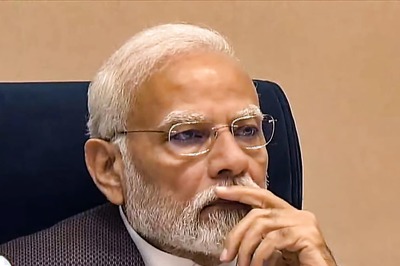
views
A significant 5.45 per cent drop in the voter turnout for the 2022 Punjab polls has left political parties and analysts baffled, with most of them trying to wrap their heads around what went wrong.
The state witnessed the lowest voter turnout of the past two decades this time. Compared to 77.40 per cent in 2017, the state recorded 71.95 per cent this time. In 2002, it was 65.14 per cent, when in a tight contest with the SAD-BJP combine, the Congress had come to power.
More than any other party, the low voter turnout seems to have taken the Aam Aadmi Party (AAP) by surprise, with analysts claiming that the undercurrent of support for the party could have just been hype. Opinion polls had indicated AAP emerging as a winning party.
In the politically significant Malwa region, which had emerged as stronghold for the AAP, the voter turnout was clearly disappointing. Of 28 assembly constituencies falling under south Malwa’s seven districts, 50 per cent seats witnessed more than a 5 per cent drop in the voter turnout as compared to 2017 polls.
In the last election, AAP had gained substantially in the Malwa region and this time too it was seen as the epicenter of AAP’s undercurrent.
“The first verdict of the election has come that political parties in the fray are no different from each other. The decline in votes polled indicated that in spite of a number of political parties contesting the polls, these non-voters gave their verdict that there was no alternative available for change. These non-voters didn’t find the slogan of AAP’s claim of being a party of change attractive enough to go to vote,’’ says senior political analyst Dr Pramod Kumar from Institute for Development and Communication.
However, senior AAP leader Harpal Cheema denied the party’s chances would be impacted due to low voter turnout. “Whatever might be the claim of the other opposition parties, it is clear that AAP is coming to power in Punjab. Areas where we had expected high voting have shown results,’’ Cheema told News18.com.
But data available suggests otherwise. Abohar and Ferozepur City were the only segments in the region that saw a rise in polling by 3.71 per cent and 1.25 per cent, respectively. Nihal Singh Wala constituency held by AAP’s Manjit Singh Bilaspur recorded a drop of 7.85 per cent, the biggest in the region. It was followed by Ferozepur Rural, being represented by Congress’ Satkar Kaur Gehri, where 7.33 per cent less votes were polled than last elections.
As political parties get down to analysing factors for the low poll turnout, some leaders attributed it to factors ranging from disillusionment with the poll process to low participation of NRIs in the process. With a huge chunk of youth voters migrating to foreign shores in the last five years, their return and involvement in the poll process, according to leaders, could have lifted the overall voter sentiment.
“The pandemic, coupled with high airfares, acted as a deterrent to these voters returning and pitching in. Last time, a big chunk of our votes came from this segment, adding to the voter turnout,” claimed a senior AAP leader.
Though on record Congress leaders claimed a low voter turnout suggests an absent anti-incumbency, insiders say the leaders too seemed unsure. The party is carrying out a seat-by-seat analysis to ascertain how it had fared.
Even in the politically significant Jalalabad seat from where SAD president Sukhbir Singh Badal was contesting, almost a 6 per cent drop was witnessed at 80% turnout.
Read all the Latest Politics News and Breaking News here




















Comments
0 comment